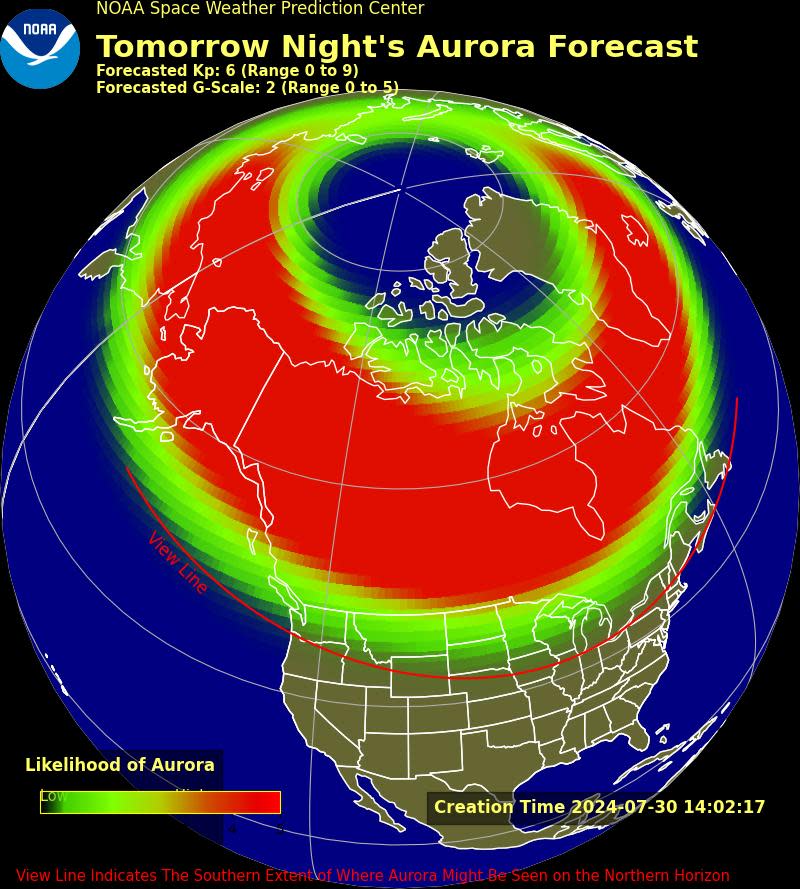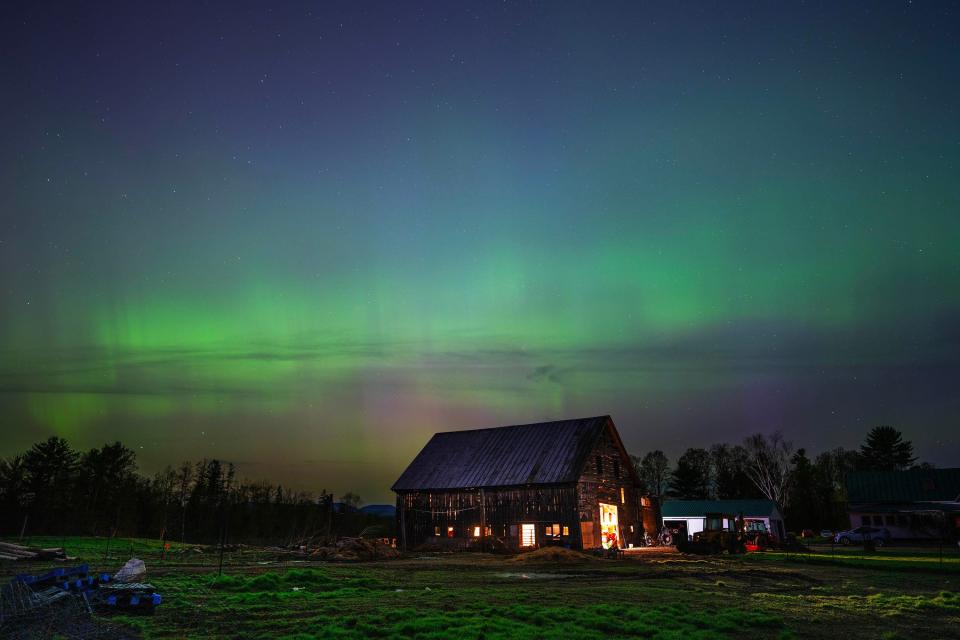Northern lights may be visible over Vermont this week. Here's when to look for them
Here's another chance to see the Northern Lights, also known as Aurora Borealis, this year.
Predictions made recently from the National Oceanic and Atmospheric Administration (NOAA) indicate that New England could again witness the Northern Lights this week. The agency stated on its website this week that "geomagnetic storm watches are out" for this week.
At the beginning of May, New England states witnessed "the strongest display of the northern lights in the last 20 years," according to Massachusetts Institute of Technology Technical Instructor and Observatory Manager Tim Brothers.
The lights were also visible for a time at the beginning of the summer in June.
Here's what to know.
When is there a chance of seeing the Northern Lights?
NOAA stated that if you're in the northeast, you'll have a chance to see the lights on the evenings of Tuesday, July 30, Wednesday, July 31 and Thursday, Aug. 1. Cloud cover could impact visibility. A solar event called a “Cannibal CME” is causing the show.
When is the best time to see the Northern Lights?
The northern lights are typically most visible between 10 p.m. and 2 a.m. EDT.
What states will be able to see the Northern Lights?
According to NOAA, the following states will be able to see the lights on this week: Alaska, Washington, Oregon, Idaho, Montana, Wyoming, North Dakota, South Dakota, Nebraska, Minnesota, Iowa, Wisconsin, Illinois, Michigan, Indiana, Ohio, Pennsylvania, New York, Vermont, New Hampshire, Massachusetts, Connecticut, Rhode Island and Maine.

What causes the northern lights?
Northern lights are caused by the sun.
"The northern lights are created when energized particles from the sun slam into Earth's upper atmosphere at speeds of up to 45 million mph, but our planet's magnetic field protects us from energetic assault," according to Space.com. "As Earth's magnetic field redirects the particles toward the poles the dramatic process transforms into a cinematic atmospheric phenomenon that dazzles and fascinates scientists and sky-watchers alike."
Brothers explained in a past interview that "it's the ejection of material from the sun that causes this reaction." Brothers added those are called coronal mass ejections (CMEs).
Why have the Northern Lights been so active this summer?

The sun goes through phases on an 11-year solar cycle, according to Space.com.
Right now, it's nearing the peak of that cycle, known as "solar maximum." During this moment, the sun emits more solar flares and coronal mass ejections, massive bubbles of plasma threaded by rejected magnetic field lines, Space.com stated.
How to see the Northern Lights
As always, dark skies make for better stargazing.
"We typically suggest getting away from cities and find a open field or hilltop to lay out under the stars and wait for the show to really peak at the late evening or early morning hours," Brothers said in a past interview with Wicked Local. "In New England, heading for a local conservation area or park that keeps lighting off at night is ideal. Another option is a coastline away from the larger cities."
He added whenever you are stargazing, it is always handy to have a good telescope or a pair of binoculars.
Some suggestions of great places in New England to see the lights include:
Halibut Point State Park, Rockport, Massachusetts
Marconi Beach, Cape Cod National Seashore
Baxter State Park/North Maine Woods
Places to check for northern lights forecast
If you want a chance at seeing the Northern Lights, here are some websites where you can monitor the sun's activity:
Are solar flares that cause the lights dangerous?
"The ejection of material (from the sun) can actually affect national security," Brothers explained in a past interview, adding that flares can disable satellites, and even power-grids on earth.
"If these (flares) are strong enough, they could cause satellites to just die," Brothers explained.
According to the National Oceanic and Atmospheric Administration (NOAA), the flares can also cause the loss of:
Water and wastewater distribution systems
Perishable foods and medications
Heating/air conditioning and electrical lighting systems
Computer systems, telephone systems, and communications systems
Public transportation systems
Fuel distribution systems and fuel pipelines
This article originally appeared on wickedlocal.com: Will I be able to see the Northern Light in VT? It's possible.

